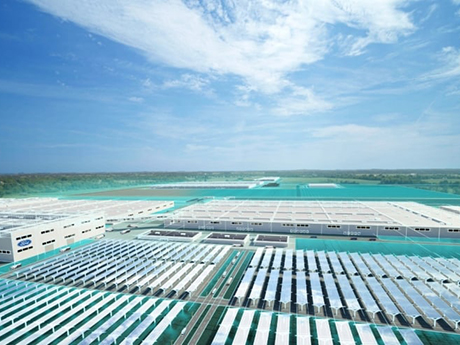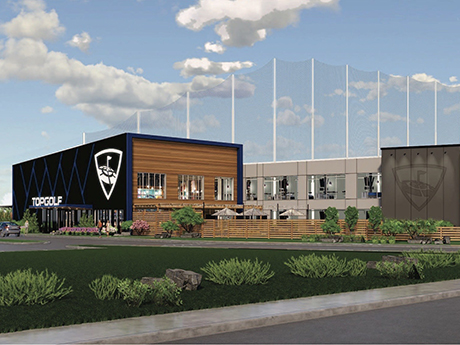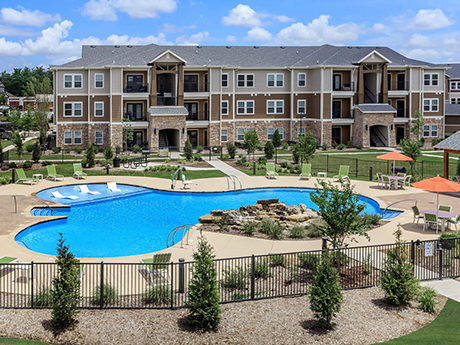Over the past decade, Nashville has enjoyed a baffling explosion of growth that sent cranes shooting up all over the city, festooned with developer names like Bell, Clark and Giarratana. Highrise towers of glass and steel rose out of the old rail yards like the emerging monolith in the opening scene of “2001: A Space Odyssey” multiplied in a funhouse mirror. The Metropolitan Government is eager to add new projects to its tax rolls, and its Assessor of Property decides when and how that happens. The assumptions made by the assessor’s office about a project’s cost and timing dictate how quickly and how much a new building is taxed. So, as always, taxpayers need to keep an eye on what the assessor is doing. The assessor’s difficult job has become even more complicated in the post-COVID quagmire of supply chain failures. Twelve-month projects have stretched into 24-month projects, and the assessor’s assumptions about completion times have been thrown out of whack. To make matters worse, Tennessee’s property tax statutes were not designed to give relief for construction delays or lengthy projects, and now the clock is ticking. Assessing new construction The last Davidson County reappraisal was in 2021, and the …
Market Reports
Inflation is here. Is the Memphis multifamily market built to withstand it? Coming off an unprecedented year of sales volume in 2021, Memphis multifamily assets continue to be in high demand despite rising interest rates. While year-over-year sales volume might be down, the average market sale price per unit increased by 10 percent to $90,700 over the same period, as of second-quarter 2022. While overall market rent per unit growth is off double-digit highs from 2021, it is still up a sturdy 8 percent year-over-year. Strong occupancy levels, low concession rates and limited on-market supply is keeping pricing buoyant, leading to steady cap rates in the face of rising debt cost — at least for now. Capital investment and renovation to existing multifamily properties contributed greatly to both rent growth and sales volume in 2021. Memphis is a very appealing option for investors seeking value, as over 50 percent of all transactions in 2021 fell within the $40,000 to $80,000 per unit range, which is much more competitive than many primary markets. With over two-thirds of existing inventory built before 2000, the vintage of current inventory provides ample opportunities to reposition assets. Local government entities have actively played a role …
Memphis has seen a tight retail market for quality space and development opportunities since the COVID-19 pandemic. Our market sits at a 3.5 percent vacancy rate, according to CoStar Group analytics, and overall retail leasing activity is strong. Memphis has benefitted from a consumer base that is ready to return to the pre-pandemic rhythms of life. Retail sales have been healthy overall, with strong increases in sales of restaurants, particularly restaurants with a drive-thru. Rents for high-demand space have increased accordingly given the lack of quality opportunities for new-to-market or expanding retailers. Investment sales activity has been steady with an average cap rate around 7 percent, according to CoStar. Well-located and stable shopping centers are trading lower. A handful of high-profile institutional assets are either on the market or about to hit the market, and we expect those to trade at sub-7 percent cap rates. Ford Motors and SK Innovation’s new electronic vehicle (EV) and battery production facility in Stanton, Tenn., (25 miles east of Memphis) is anticipated to have a positive impact on the local economy. The $5.6 billion mega campus, called Blue Oval City, will add around 5,700 new jobs at its plant, with several more thousands indirectly …
2021 was a banner year for the Memphis industrial market by virtually every measure. Leasing exceeded 32 million square feet, easily doubling the average of 12.8 million square feet per year; annual net absorption reached 12.7 million square feet, the highest ever recorded; 14.6 million square feet of inventory delivered to the market; rental rates reached historic highs; and investment volume topped $2.2 billion. The potent demand that carried the market to such record-setting extremes continued into the beginning of 2022, with leasing activity in the first quarter approaching 6 million square feet and net absorption surpassing 3.3 million square feet. Sustaining the steady upward trend the Memphis market has followed since the beginning of 2019, the direct vacancy rate rose 50 basis points from last year to 6.8 percent, but this increase is largely due to the profusion of spec product rather than any significant moves out of the market. In typical fashion, the bulk of leasing activity occurred in the Southeast, DeSoto County and Marshall/Fayette County submarkets, comprising more than 75 percent of the quarter’s total volume. But even the Northwest submarket has seen more action recently with the delivery of Amazon’s 181,500-square-foot last-mile facility in the Raleigh …
After several years in the top 10, Nashville was named the No. 1 “market to watch” in overall commercial real estate prospects, according to Urban Land Institute and PwC’s 2022 Emerging Trends in Real Estate report. Nashville surpassed its supernova competitors (markets with a population between 1 million and 2 million people) such as Raleigh-Durham, Phoenix, Austin and Charlotte. The report credits Nashville’s robust and sustained job and population growth, above-average levels of economic diversity and investment/development opportunities. In short, Nashville’s economy fared relatively well during the pandemic-induced recession, and its industrial market never slowed down. Nashville has been a top location for relocating and expanding industrial-using companies, as its location is unmatched for distribution. Fifty percent of the nation’s population lives within 650 miles of Middle Tennessee, with 24 states falling within that radius. This translates to a one- or two-day truck delivery time to more than 75 percent of all U.S. markets. Additionally, it is one of only six U.S. cities with three major intersecting interstate highways. Nashville’s economy is extremely resilient due to its diversified economy. However, Nashville is not immune to national trends that have affected multiple industrial markets. The cost of construction continues to increase, …
Suburban household growth in metropolitan Nashville was already outpacing urban growth prior to the COVID-19 pandemic, but has accelerated since the outbreak due to corporate America’s acceptance of work-from-home staffing. Multifamily investors have followed this suburban household growth as well. Two recent examples are in Lebanon and Murfreesboro, both high-growth, high-quality suburbs of Nashville that have recently experienced record-setting transactions. The Pointe at Five Oaks recently sold for $243,000 per unit, setting a record for Lebanon. Vantage at Murfreesboro recently went under contract north of $270,000 per unit, also setting a record for Murfreesboro. We don’t see this activity and record-setting slowing down any time soon due to the lack of supply, overwhelming out of state demand and skyrocketing replacement costs. New multifamily development continues to follow the suburban trend, often times with a mixed-use component. Case in point, Highwoods Properties has completed the assemblage of all 145 acres of Ovation Franklin and is beginning the journey to reimagine and re-introduce one of the greatest opportunities for mixed-use development in the nation. This project will consist of 1.4 million square feet of Class A offices, 950 residential units, 480,000 square feet of retail and restaurants and 450 hotel rooms. Single-family …
After national media declared traditional brick and mortar retail to possibly be on it’s “last leg” due to the COVID-19 pandemic, the Nashville area has seem quite the opposite reaction. Already in an accelerated state of demand going into the shutdown of 2020 that extended into a malaise in 2021 in many places, Nashville is seeing all indicators of the hottest retail market in its history. Prior to the pandemic, rents and occupancy were already at historic highs. 2020 began with a continuance of that trend and ended the year higher with the most active submarkets closing the year below a 5 percent vacancy rate across all retail product types as the market absorbed more than 300,000 square feet of new product. During 2021, the region experienced further good news for landlords with rents increasing at one of the fastest rates in the United States (more than 8.8 percent). This continues a trend lasting more than 10 years where regional rent growth outpaced the national average. This growth was at least partially driven by a vacancy rate at year-end of only 3.7 percent. The primary driver of these metrics continues to be population growth and a low level of retail …
The mountaintop of multifamily transactions was blown off in 2020 and 2021. Sales transactions are up 300 percent from 2017. Chattanooga’s hot market has gone from $150 million in transactions to nearly $500 million. Hungry investors have found prices lower than in many other desirable cities, the cap rates higher, attractive rental price increases and the locale unbeatable. Two-bedroom apartment rents are up over 17.6 percent in 2021 according to a recent local study yet still 19 percent below the average rate nationally. Residential price increases have outpaced the multifamily increases and made many single-family homes unaffordable for first-time homebuyers, further feeding the apartment demand. In addition to the volume of transactions increasing by some 300 percent, the sales price per door has risen significantly. In 2017 the average price per door for the market was $69,459 and in 2021 we are seeing $132,125 for a 90.2 percent increase. This statistic includes all product classifications. Class A prices per door have increased from $107,193 to $163,488. This is an increase of 52.5 percent. Class C product has risen from $46,176 to $93,308 per door. This indicates a 102 percent growth. Class C has outpaced all other classes in the last …
Fueled by the acceleration of e-commerce amid the COVID-19 pandemic, the Memphis industrial market’s record-setting momentum continued into the first half of the year. Demand fundamentals are the strongest they’ve ever been, with lease transaction volume at mid-year exceeding 12.2 million square feet for the second year in a row and total market direct net absorption reaching an unprecedented 5.3 million square feet. To put these numbers in perspective, lease transaction volume and direct absorption through June of pre-pandemic years averaged 5.8 million square feet and 1.6 million square feet, respectively. The market’s direct vacancy rate has hovered around 6.5 percent since the end of 2019, an impressive feat given the exceptional amount of speculative product that has been added to inventory over the past year and a half. New to the market The region’s central location, complemented by its world-class transportation infrastructure and low rental rates, make Memphis an attractive option for industrial users. Notable deals that have occurred since the beginning of 2020 include Milwaukee Tool’s 1.1 million-square-foot lease at I-269 Industrial Park, as well as two new Amazon leases totaling nearly 2 million square feet, growing the e-commerce giant’s Memphis-area footprint to more than 6.7 million square …
Momentum in the local industrial market has been maintained because of Memphis’ world-class infrastructure offering the “four Rs” of transportation: river, road, rail and runway. Thanks to Memphis’ central location, truck freight can reach 65 percent of the nation’s population in 24 hours. The Port of Memphis is the fifth-largest inland port in the United States and an east-west highway spans the width of the country. As home to FedEx Global Headquarters and a UPS hub, Memphis International Airport surpassed Hong Kong International Airport this year as the busiest cargo airport in the world. The direct vacancy rate of the metro industrial market went from 6.5 percent in 2020 to 4.8 percent by mid-2021. Currently, there is 13.7 million square feet of inventory under construction with over 75 percent of it being speculative. The demand and recent growth continue to improve in 2021. Net absorption is above 5.3 million square feet with tenants like Yeti, Walgreens, Hamilton Beach and Amazon moving into new facilities mid-year. Rents have also continued to rise faster than the national average in many years. The average rent growth over the past 12 months is 6.9 percent, or $4 per square foot. Large preleased facilities are …








